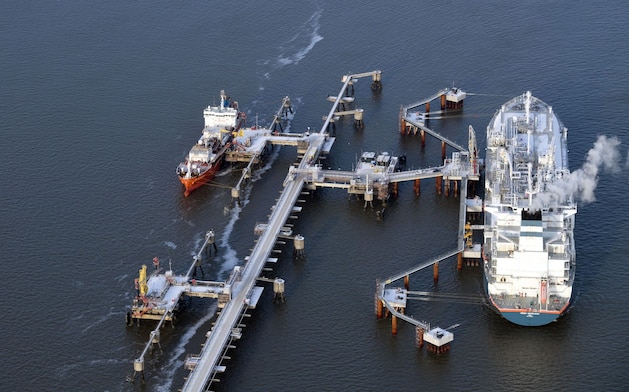In the energy crisis, Germany’s gas storage association Ines gives the all-clear: Thanks to well-filled storage facilities, there will not be a gas shortage even if the rest of the winter is very cold. Now the focus is on winter 23/24.
According to an industry estimate, Germany’s gas storage facilities will not be emptied as much as in previous years during the rest of the winter. The gas storage association Ines presented a model calculation in Berlin on Tuesday, according to which the fill level at the end of March and the end of April will be 65 percent. A year earlier, these values were only 26 and 35 percent, respectively, in 2021 they were similarly low.
The reason for the high values this year are additional imports, energy savings and mild temperatures, which means that the gas heating sometimes stays off. In the model calculation, it was assumed that the remaining winter time in 2022 in the EU will develop as in 2016 – i.e. “normal”.
The specter of the gas shortage, in which the industry would only receive state gas allocations and would probably have to throttle its production, seems to have disappeared, at least for this winter. Even with extremely low temperatures and other negative events, the association does not expect a gas shortage.
“If the currently strong fuel savings continue, Germany will get through the winter well,” said Ines Managing Director Sebastian Bleschke. The association has 14 member companies that have over 90 percent of the gas storage capacities in Germany.
A filling level of 40 percent at the beginning of February is required by law. On Tuesday, the Federal Network Agency reported a fill level of 91.2 percent and a mini plus of 0.1 points within 24 hours. The high value makes it clear that the statutory 40 percent requirement is easily skipped. And even after that, according to the gas storage association’s forecast, the value will only fall moderately. And even if it gets very cold and global events have a negative impact on imports, it will be enough.
In the very worst case of the model calculations, the gas storage tanks are completely empty in March, but are then quickly refilled and reach 100 percent at the end of September.
However, the coming winter is considered critical. After all, there will probably be no more Russian gas imports this year. These were previously important for filling the systems in spring and summer. But thanks to new LNG terminals on Germany’s coast and large amounts of imports from Norway and other countries, the storage facilities are likely to fill up well despite the total Russian failure, according to experts.
Association leader Bleschke showed some optimism with regard to the coming winter, but emphasized that savings in consumption should be maintained. The model calculations are subject to many imponderables. The daily situation report by the Federal Network Agency, which was published on Tuesday just a few hours after the association’s presentation, showed how fragile the situation is.
It announced that there would be repair work on a compressor station of the Norway gas pipeline from January 12 to 17, which would make “changes in Norwegian imports visible”. However, the import reductions were “relatively small and can be partially compensated for by other sources,” it said.
